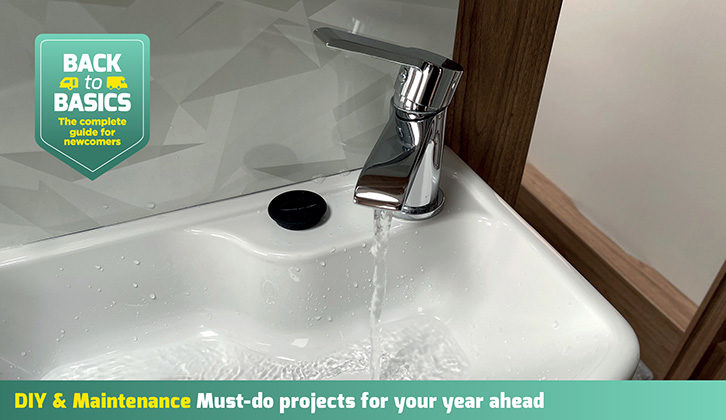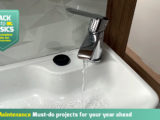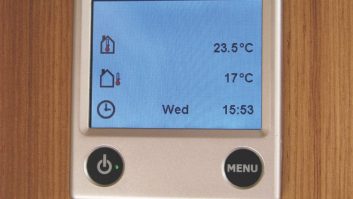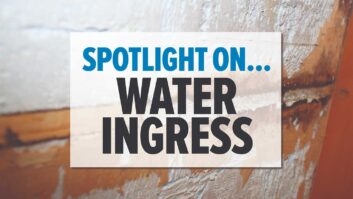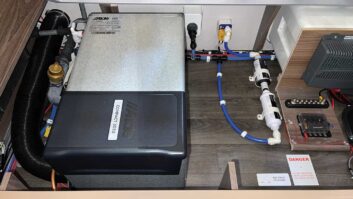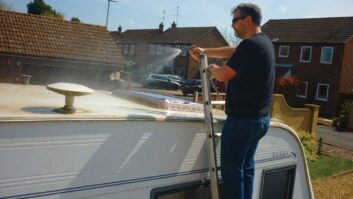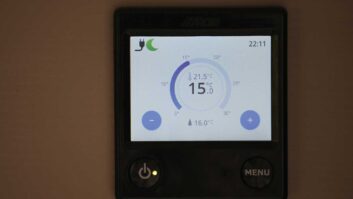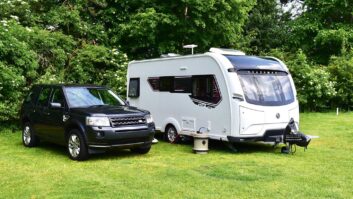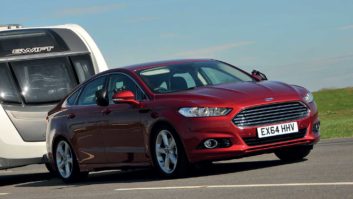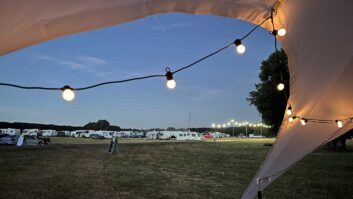New caravans are all but sold out, and almost as soon as a good used model reaches the forecourt, it’s viewed, sold and off to a new home.
With so many newbies taking to our favourite pastime, I see plenty of basic questions being asked. I think we all understand that what is standard practice and seems so simple to many of us can be quite daunting for someone new to caravanning. We all had to start somewhere!
Some of the most common questions relate to the van’s fresh-water system. Sometimes, there’s no water coming through to the taps at all, or the flow to one or more of the taps is weak. But in many cases, the solutions are quite straightforward.
No water at all
Let’s start with a lack of water entering the caravan from the Aquaroll. In the main, this is likely to be down to one thing, the water pump – although blocked water filters or seized non-return valves occasionally cause problems, too.
If you connect the pump to the van and lower it into the Aquaroll, it is possible that you might have an air lock. Starting with the cold-water system, if we assume the pump switch
is ‘on’ on the control panel (or wherever it’s located), when you turn on the tap, can you hear the pump running?
If you can, but no water comes through the tap, the most likely cause is an air lock, probably in the pipe between the actual submersible pump and the inlet housing on the caravan.
If this happens, turn off the tap and disconnect the pump from the inlet. Lift the pump out of the Aquaroll and hold the whole assembly upright, with the pump at the bottom.
Now lower the pump into the Aquaroll (with the other end of the assembly still not attached to the caravan) and jiggle it around a bit, tapping it gently on the side of the filler hole on the Aquaroll to dislodge any air that might be trapped inside.
With the pump fully in the Aquaroll, attach the inlet to the caravan and try the tap again.
With luck, this will have resolved the issue and you’ll now have running water.
The first time you connect the water on a break, it’s worth doing things this way around, to try to avoid getting an air lock in the first place.
If you have connected the water pump and the pump isn’t running at all, it’s likely to be either that the impeller in the pump has stuck, or there’s an issue with the electrical supply (fuse, microswitch in the tap, although they’re becoming increasingly rare these days) or dirty contacts (usually between the pump assembly and the water inlet).
The place to start is with the submersible pump itself. If the impeller has stuck, not only will it not pump water from the Aquaroll, it might also have blown the relevant fuse.
It wouldn’t be much use replacing a blown fuse without finding out the cause, because it’s likely to blow again.
Access the impeller
Many pumps have a strainer attached and this needs to be removed to gain access to the impeller. If there’s no strainer attached, you should have direct access to the impeller.
In most cases, the strainer simply unclips from the bottom of the pump. On the Whale unit used in our example, a gentle squeeze is enough to unclip it, but others might need a small screwdriver to help.
With the strainer removed, you should be able to see a little hole, and just inside that is the impeller. Using a small screwdriver, you should be able to turn the impeller fairly easily.
If you can’t turn it, it’s seized, and the best course of action is to replace the pump.
However, it might be that after some initial resistance to turning, the impeller starts to turn freely (this might have happened if the caravan hasn’t been used for a long time).
In that case, I would try the pump again to see if it works.
If you still have no joy and the impeller is free to rotate (and you’ve checked the fuse, and the pump master switch is ‘on’!), make sure that the electrical contacts between the inlet housing and pump assembly are free from any dirt or corrosion.
With a Truma pump, you could try bending or twisting the pins very carefully to make a better contact. I emphasise the ‘carefully’, though, because you don’t want to break them.
The only other potential problem you might have is if your taps are microswitched and one of those has failed; in that case, it is likely to be just one tap that doesn’t work. For example, you might not get water from the kitchen tap, but the washroom and the shower are perfectly fine.
Weaker flow
If you have running water, but the flow at one tap is weaker than the rest, again the solution should be straightforward.
It might be that the tap has a filter on the end of the spout, which has become clogged. On some taps, the filter is just a simple push-in plastic piece, which will pull out. Others have a screw-in end that has ‘flats’ for a spanner on each side.
Remove and clean these.
You might be quite surprised by what you find – I know I was the first time I did it!
If cleaning the filters doesn’t resolve the issue, then the most likely problem is a kinked water pipe somewhere.
To rectify that, you’ll have to locate the kink and see if you can pack the pipe or re-route it to avoid it kinking.
However, most modern caravans have semi-rigid pipework, which is designed to avoid kinking problems.
Step-by-step guide
1 A typical water pump assembly (Whale in this case).
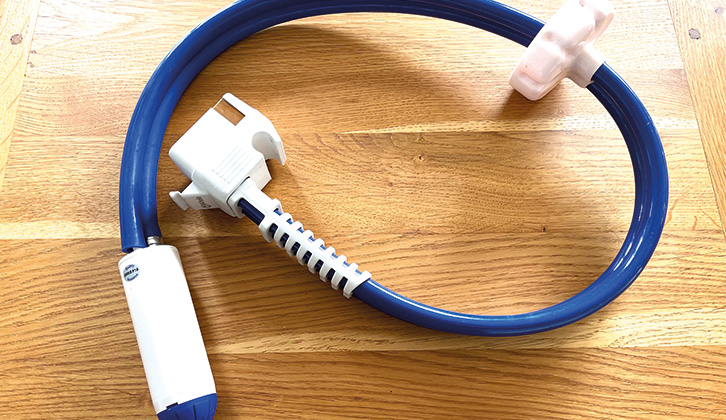
2 The water pump itself.
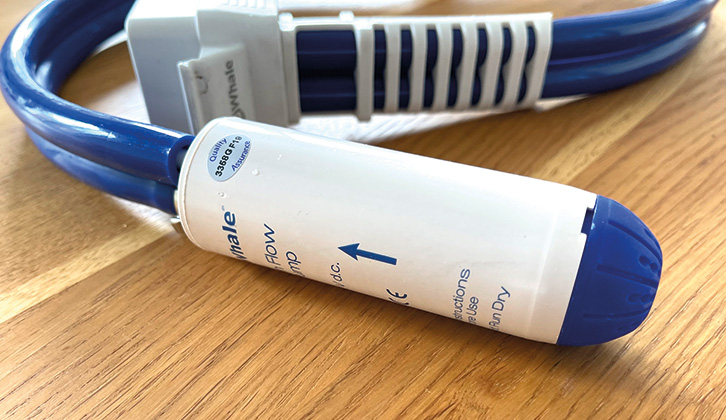
3 Remove the strainer from the end of the pump (if fitted).
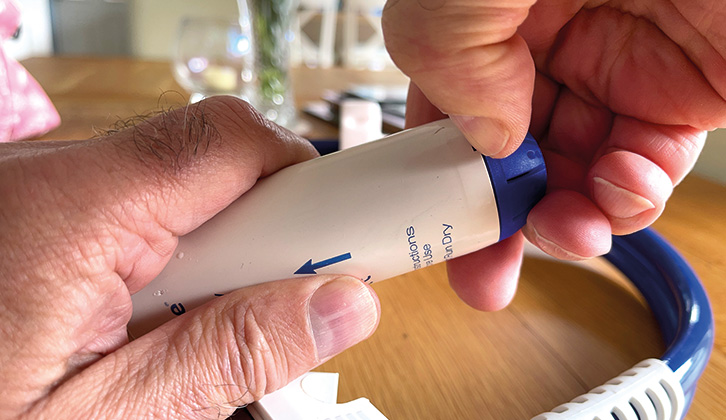
4 Try turning impeller with a small screwdriver; it should be free to turn.
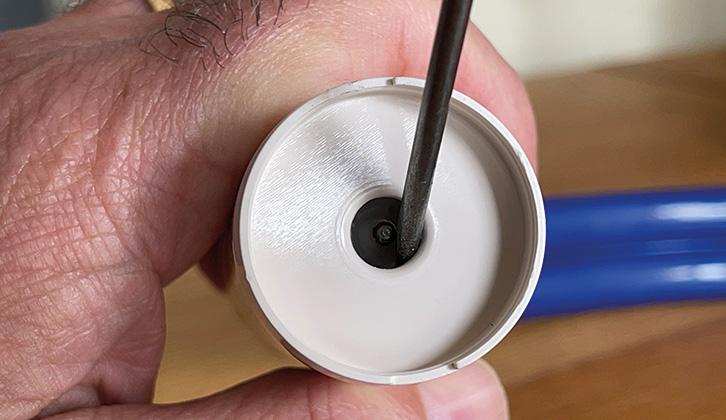
5 Lower the pump into the Aquaroll and gently tap it on the side as you’re lowering it.
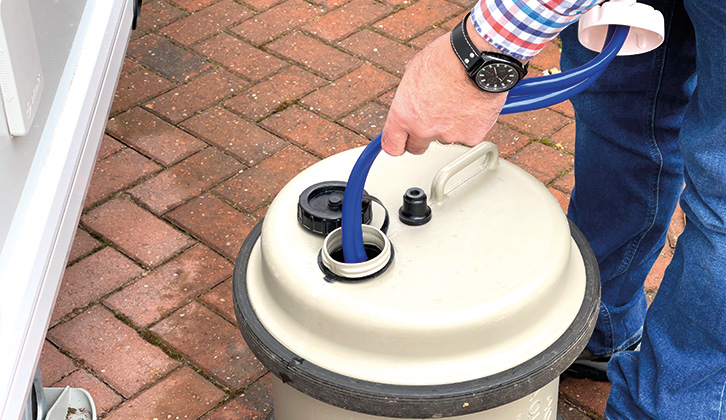
6 Attach the pump assembly to the inlet.
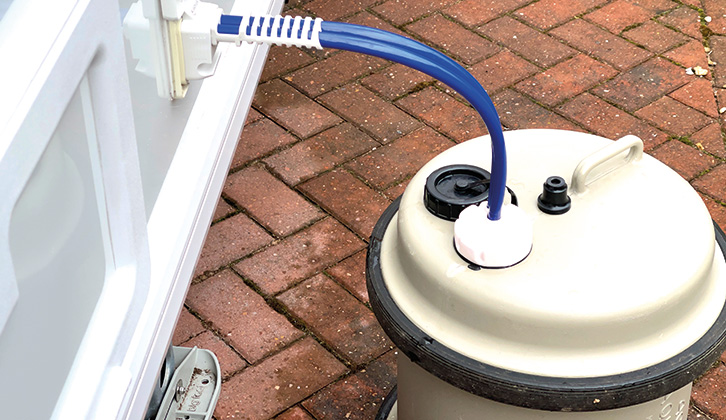
7 Next, turn on the pump master switch.
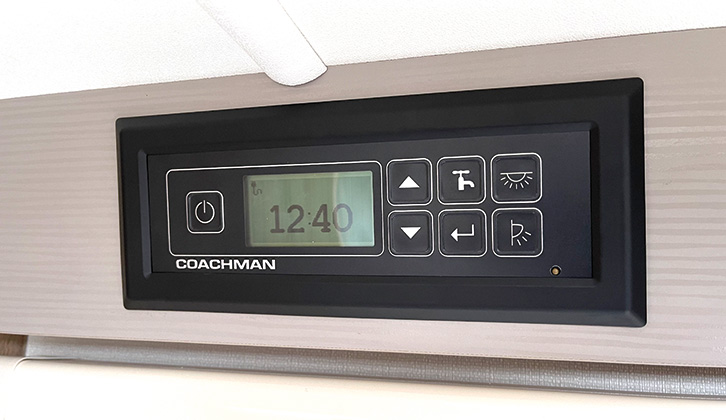
8 With luck, you will have running water to all of the taps, including the shower.
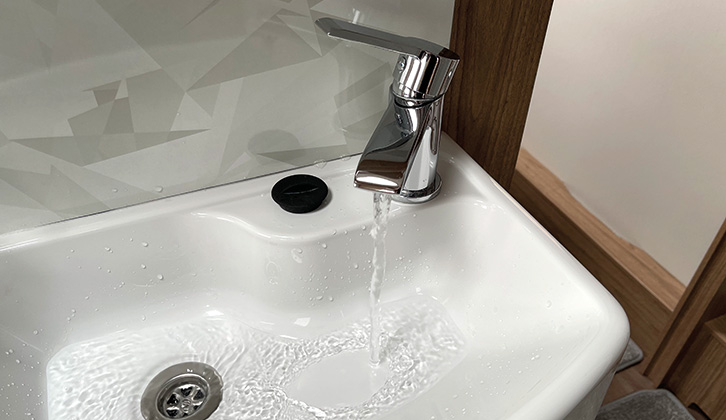
9 A simple push-fit plastic filter for the tap.
10 Screw-in tap filter will require a spanner.
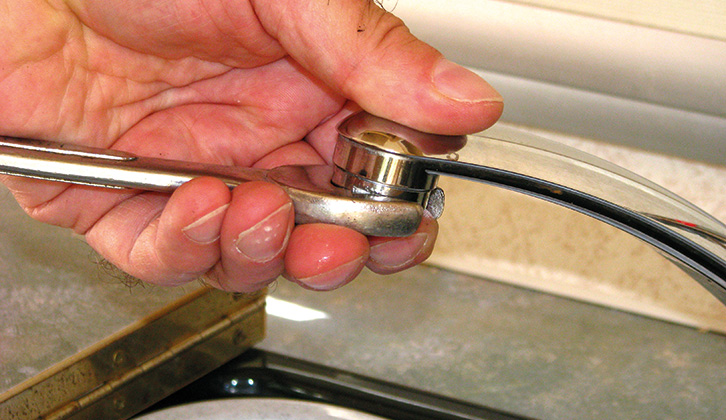
11 You might be quite surprised by what you find in there!
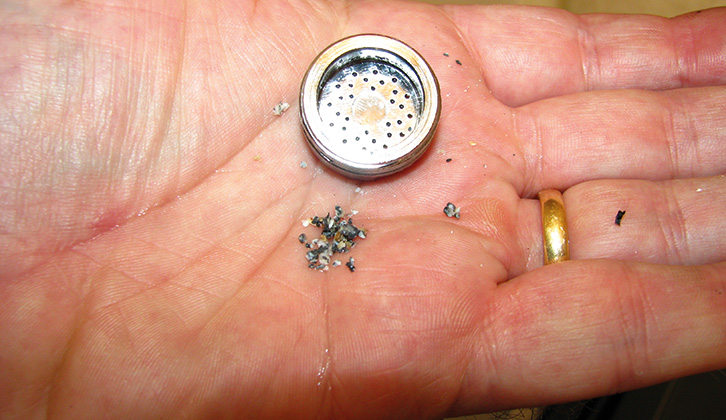
After more great DIY inspiration? Then head to our Back to Basics: DIY & Maintenance category, where you’ll find some brilliant projects and ideas to try out.
Future Publishing Limited, the publisher of practicalcaravan.com, provides the information in this article in good faith and makes no representation as to its completeness or accuracy. Individuals carrying out the instructions do so at their own risk and must exercise their independent judgement in determining the appropriateness of the advice to their circumstances. Individuals should take appropriate safety precautions and be aware of the risk of electrocution when dealing with electrical products. To the fullest extent permitted by law, neither Future nor its employees or agents shall have any liability in connection with the use of this information. You should check that any van warranty will not be affected before proceeding with DIY projects.
If you’ve enjoyed reading this article, why not get the latest news, reviews and features delivered direct to your door or inbox every month. Take advantage of our brilliant Practical Caravan magazine SUBSCRIBERS’ OFFER and SIGN UP TO OUR NEWSLETTER for regular weekly updates on all things caravan related
